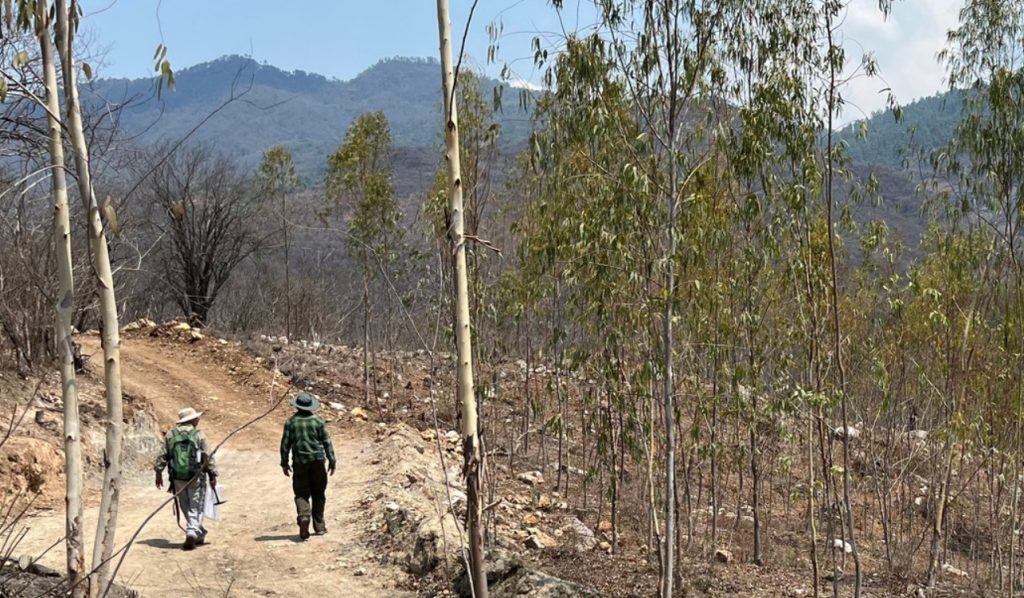Volcanic Gold Mines drilling Motagua Norte project, Guatemala

Volcanic Gold Mines Inc. [TSXV-VG; FSE-CKC1] and joint-venture partner Radius Gold Inc. [TSXV-RDU] have begun a first-pass drilling campaign on the Mila gold discovery located within the Motagua Norte project.
The Mila prospect, to date, is defined over a 250-metre by 600 metre area of quartz outcrop, subcrop and boulder float, with abundant visible gold and bonanza-grade assays discovered by company geologists in central Guatemala. A diamond core drilling rig has mobilized to commence exploration of the compelling gold targets developed at Mila. Drill holes are designed to establish the width, grade and geometry of gold mineralization. The company anticipates drilling between 1,000 metres and 3,000 metres of diamond core in the first campaign.
The Mila discovery presents an unusual challenge for exploration, but an exceptional opportunity. The abundance of gold-mineralized quartz boulders covering the surface makes it difficult to map out, measure and model the gold mineralized structures.
Of approximately 420 rock chip samples collected at surface across the area, over 100 returned assays exceeding 10 g/t gold, including 21 of over 100 g/t gold and a maximum of 692 g/t gold. With widely distributed gold-bearing quartz at surface, it is difficult to distinguish the in situ quartz outcrop from the boulder piles that form at the base of collapsed vein outcrops and from boulder scree that has been locally transported downhill. In addition to the obvious quartz vein mineralization, gold has also been observed hosted within sericite-altered and micro-veined schist, with samples returning assay results of up to 94 g/t gold, indicating potential for significant wall rock mineralization.
The north-south-striking quartz ridge, which returned rock chip assays of up to 116 g/t gold, is being tested in the first few drill holes.
Sericite-altered schist with quartz stockwork veinlets cropping-out on the eastern wall of the north-south quartz ridge returned assay results of up to 118 g/t gold is also being targeted in the first few drill holes.
Geological mapping of outcrops combined with interpretation of topographic features suggests that there are multiple quartz veins in at least two different orientations: north-south- and northwest-southeast-striking, with the best assay results concentrated in north-south trends.
Continuous chip channel sampling across the best-defined north-south structure, a 250-metre-long ridge running through the centre of the prospect area, returned average grades of 95 g/t gold across a 10-metre width of collapsed quartz vein boulders. This structure, and at least two more less-well-defined parallel quartz boulder ridges are interpreted as north-south-striking veins. True thickness and dip direction of these veins is not yet understood and will be tested in the initial drilling.
Drilling will also test a 100-metre-wide dense quartz boulder field on the west side of the central north-south structure continuous lines of two m long chip channel samples of mixed outcrop, subcrop and colluvium returned average grades of 42 g/t gold along a 34-metre line, and 54 g/t gold along a 24-metre long line. The surficial quartz in this area is interpreted as the expression of multiple, close-spaced quartz veins. The number of veins and their geometry are undefined.
The initial drill program is exploratory in nature and aims to establish the number of zones, width, grade and geometry of the gold-bearing structures.
Simon Ridgway, Volcanic Gold Mines’ president and CEO, commented: “The Volcanic team’s dedication has resulted in the discovery of great high-grade drill targets, and secured licences, permits and community support for the Motagua Norte project. The team is enthusiastic to commence drilling the first holes into the multiple gold targets in the Mila prospect. The results of several rock chip sampling programs conducted in recent months along the belt has revealed several new areas of interest where we are seeing similar high grades. A successful drill program at Mila will reinforce my belief that the Motagua Suture zone has the potential to become a prolific gold camp.”
The Motagua Norte project is a gold system hosted by schists of the Motagua suture zone, an east-west-striking belt of metamorphic rocks that outcrops at the line of collision between the North American and Caribbean tectonic plates.
Volcanic Gold Mines has an option agreement with Radius Gold Inc. to earn a 60% interest in the Cirilo I exploration licence and other licences under applications and negotiation within the Motagua Norte project, as well as the Holly project where the joint venture has established a high-grade epithermal gold resource 60 km north of the Cerro Blanco gold deposit.
Volcanic brings together an experienced and successful mining, exploration and capital markets team focused on building multimillion-ounce gold and silver resources in underexplored countries.
